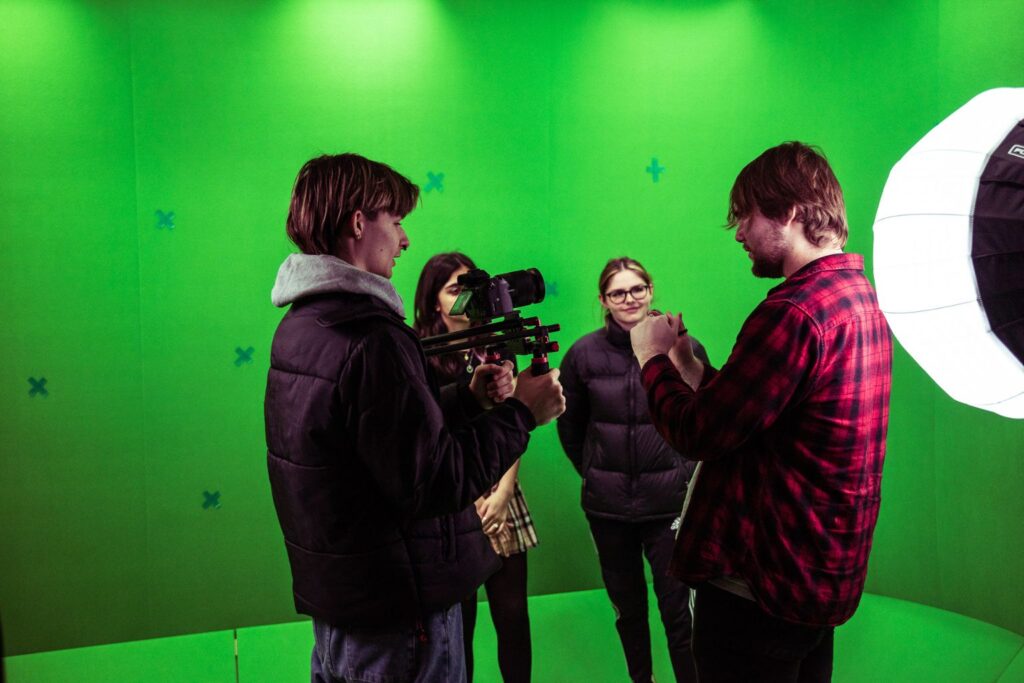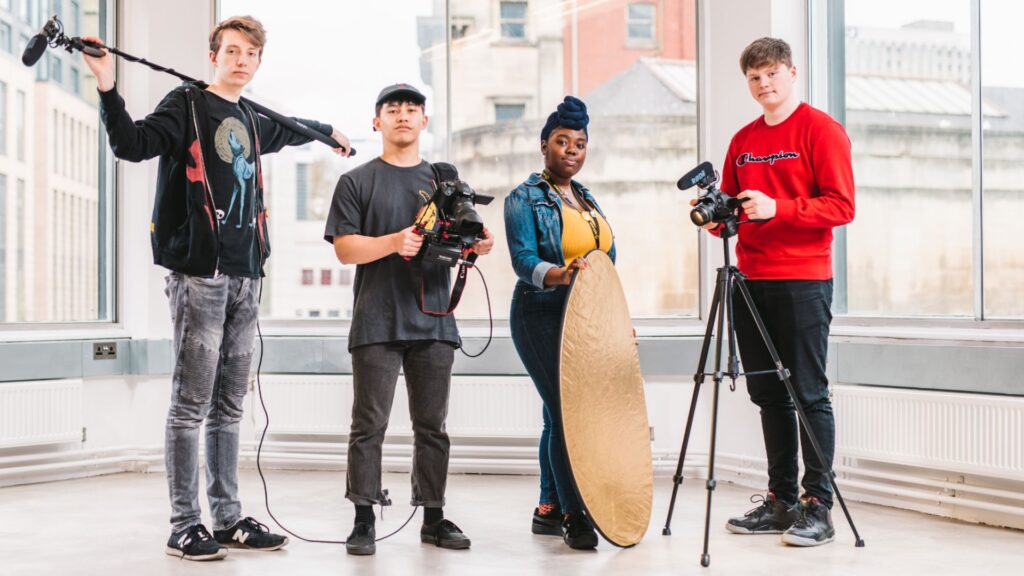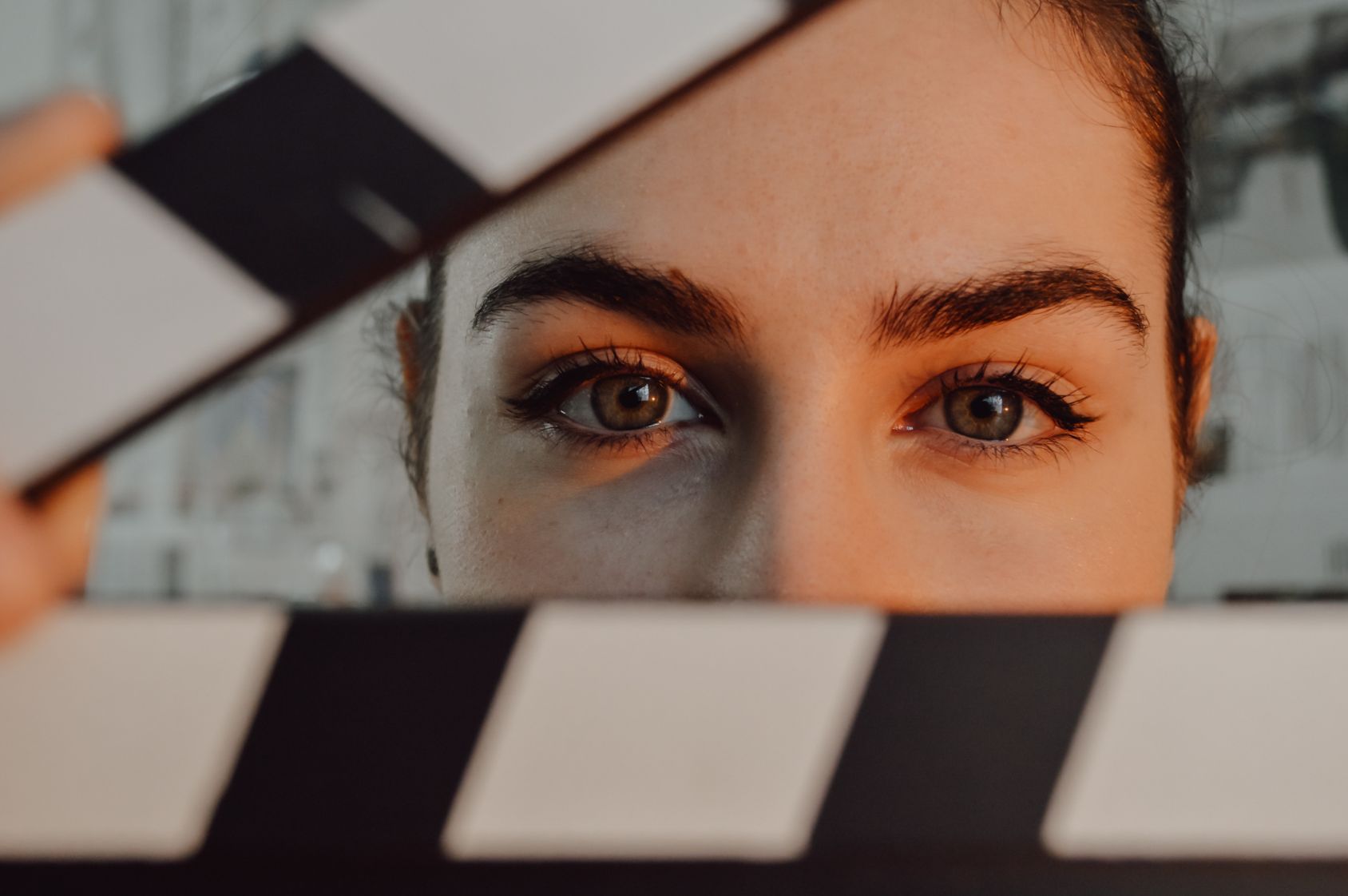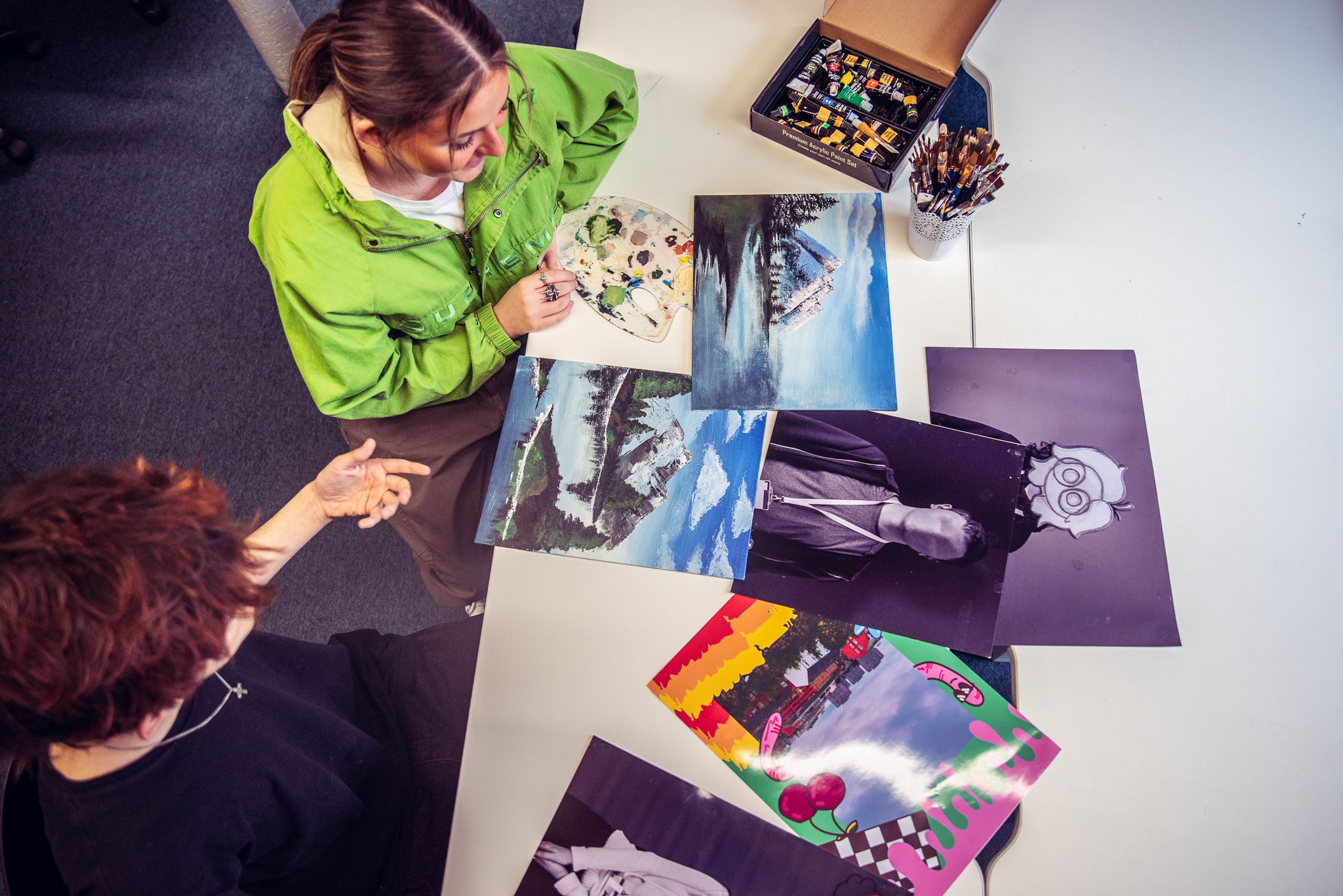In this blog, we will explore ten directors and filmmakers you need to study to boost your appreciation of the art of filmmaking.
For aspiring directors and film students, studying the works of celebrated filmmakers is an important part of the development process. The visionaries in this director’s list have shaped cinema history and pushed the boundaries of storytelling and visual aesthetics.
The importance of studying the best filmmakers of all time

Learning from the best directors is crucial for those looking to make their mark in the film industry. By analysing their achievements, aspiring directors can gain valuable insights into what makes a film artistic, commercial and culturally significant.
Quentin Tarantino
Quentin Tarantino, who has remained a household name in cinema for over 30 years, is known for his distinctive storytelling style and mix of violence with humour. His knack for pop culture-laden dialogue, non-linear narratives, and historical revenge narratives makes his films unique. With an eclectic filmography that includes classics like Pulp Fiction, Reservoir Dogs, and Kill Bill, Tarantino’s work is a masterclass in genre mixing and creating vivid characters.
Tarantino’s approach to storytelling often involves intertwining multiple storylines, creating a tapestry of interconnected plots. Themes of revenge, justice, and redemption frequently recur in his work, and obscure film references permeate all aspects of his pictures.
His influence on contemporary cinema is undeniable. His masterpiece, Pulp Fiction, towered over the 90s and set a new benchmark for what was possible in the crime genre. It’s hard to appreciate the scale of Pulp Fiction’s cultural impact when it was released, but it’s fair to say we are still seeing films that can be labelled as “Tarantino-esque”.
Martin Scorsese
Regarded by many as one of the greatest directors of all time, Scorsese’s work spans genres and decades. Films like Goodfellas, Raging Bull, The Wolf of Wall Street and Killers of the Flower Moon reflect his mastery of depicting anti-heroes and real-life narratives, highlighting his enduring relevance in popular culture.
Scorsese’s storytelling often centres on flawed, multifaceted protagonists navigating the dark underbelly of society. His visual style often features dynamic camera movements, surprising use of the freeze frame and the incorporation of non-actors or improvisation. Themes of sin, redemption, and the human condition are often found throughout his work.
Aspiring directors can learn a great deal from Scorsese’s ability to create tension, evoke emotion, and craft unforgettable cinematic experiences.
Stanley Kubrick
Stanley Kubrick’s films are revered for their meticulous attention to detail and endless rewatchability. Known for pushing the boundaries of filmmaking, Kubrick’s works like The Shining, 2001: A Space Odyssey and A Clockwork Orange are considered some of the greatest movies of all time.
Kubrick’s storytelling is often characterised by philosophical themes and a deep exploration of the darker aspects of the human psyche. His visual style is iconic, using symmetry and deliberately precise composition to create striking and thought-provoking images.
He notoriously took many years to develop most of his films, largely due to his insistence on getting every detail correct. He frequently tackled ambitious projects and leveraged new technology and innovations to bring his visions to life.
Kubrick is often cited as a major influence on many leading filmmakers today. His work set a high bar for subsequent filmmakers in terms of technical prowess and narrative ambition.
Aspiring directors can benefit greatly from studying Kubrick’s approach to filmmaking, as he was heavily involved in all aspects of production and the artistic depth of his movies means they reveal something new with every viewing.
Alfred Hitchcock
Alfred Hitchcock, known as the “Master of Suspense”, revolutionised the thriller genre in the mid-20th century with pioneering visual storytelling methods. Films like Psycho and Rear Window highlight his ability to build tension and surprise audiences with unexpected twists and beautiful craft.
Hitchcock’s storytelling often involves ordinary individuals caught in extraordinary situations, with a focus on suspense and intrigue. His visual style employed revolutionary techniques for the era, such as the “Hitchcock zoom” to heighten tension. Themes of fear, paranoia, identity, and perception appear throughout his work and reflect the cultural mood of the time they were made. This makes them ripe for retrospective critical analysis.
His influence on contemporary cinema is undeniable, with directors across genres drawing inspiration from his innovative techniques and suspenseful narratives. Aspiring filmmakers can learn from Hitchcock’s mastery of tension, pacing, and the use of the camera.
Spike Lee
Arguably in his prime around the late 80s/early 90s, Spike Lee is celebrated for thought-provoking films that tackle issues of race, identity, and social justice. Known for his distinct voice and bold storytelling, films like Do the Right Thing and She’s Gotta Have It quickly became culturally significant.
Before Lee, ‘black cinema’ in the US was largely tied to ‘blaxploitation films’, a form of low-budget B-movie fare. But Spike proved that alternative on-screen stories could be told for a black audience. This quickly proved to be true.
Lee’s storytelling often involves exploring the complexities of the black American experience of the time, but with a fun visual style, featuring vibrant colours and a stylish use of camera and music.
His influence on the industry is significant, shining a light on important social issues and inspiring filmmakers to use their platform for advocacy. Aspiring directors can learn from Lee’s ability to craft personal narratives and provoke meaningful conversations.
Ridley Scott
Ridley Scott’s films are renowned for their stunning visuals and epic storytelling. With classics like Blade Runner, Gladiator and Alien, Scott’s work spans genres and showcases his versatility as a filmmaker.
Scott’s storytelling approach often involves using a broad canvas and richly detailed world-building. The best of his films are immersive, characterised by breathtaking cinematography and lighting, with intricate set design.
Scott’s first big break into filmmaking came in his late 30s, as he cut his teeth by making high-profile adverts. This is where he developed his vivid and kinetic visual style, which he is known for.
Despite being in his late 80s today, Ridley continues to make big-budget and ambitious mainstream films, such as 2023’s Napoleon. This proves that age is just a number when artists are still inspired to create.
William Friedkin
William Friedkin’s career is marked by bold, boundary-pushing films that challenge convention. He made most of his culturally significant films in the 70s (The Exorcist, The French Connection and Sorcerer).
Friedkin made his mark with his trademark dedication to visceral and “realist” filmmaking, creating an almost documentary-like aesthetic to give his audiences a new level of realism.
It’s easy to take this for granted today as it set the standard, but at the time, it was revolutionary. For instance, with The Exorcist, audiences had never seen a supernatural film represented in such a naturalistic way. The everyday presentation of the events allowed this supernatural film to truly unsettle.
Francis Ford Coppola
Known for masterpieces like The Godfather and Apocalypse Now, Coppola’s run of films in the 70s is infamous for being one of the greatest sequences of films…ever.
Coppola’s storytelling often involves exploring themes of power, society, family, and moral conflict. Always a maverick filmmaker, he captured the imagination of many artists in the late 70s with his uncompromising vision and ability to get films made in difficult circumstances (see Apocalypse Now).
It’s a miracle that Apocalypse Now was not only made, but became the enduring masterpiece it is. Finances, natural disasters, a heart attack, difficult stars, local governments, you name it. The odds were stacked against this film being completed.
Filmmakers can learn from Coppola’s ability to find creative solutions in the face of adversity.
Kathryn Bigelow
Kathryn Bigelow is a female director whose films often examine extreme cases of masculinity or masculine worlds. Her films jump from genre to genre, but those themes usually remain.
Recently known for films like The Hurt Locker and Zero Dark Thirty, Bigelow’s work is characterised by protagonists who are usually outcasts and are at odds with their environment.
She gained significant attention for her early effort, “Near Dark” (1987), which is now a cult classic that blended the horror and western genres. Her unique style often combines intense action with deep psychological and political themes, as seen in “Point Break” (1991), a film that has achieved cult status over the years.
“The Hurt Locker” was particularly groundbreaking, earning her the Oscar for Best Director and making her the first woman to achieve this honour.
Bigelow’s influence extends beyond her films, as she has paved the way for female directors in a male-dominated industry, inspiring a new generation of filmmakers with her bold and innovative approach to storytelling.
Wes Anderson
Wes Anderson is one of the most instantly recognisable visual stylists of our time. His style transcends the film medium. Known for whimsical storytelling and highly stylised visual aesthetic, films like The Grand Budapest Hotel and Moonrise Kingdom are enjoyed for their blend of precise choreography, humour, and heightened visual aesthetic.
His popular and distinct visual style is now iconic. It is defined by symmetrical compositions, pastel colours, and meticulous attention to detail. Themes of family, friendship, and individuality are central to his work, creating a charming and relatable experience.
His influence on contemporary cinema is significant, inspiring filmmakers to experiment with visual style and narrative structure. Aspiring directors can learn from Anderson’s ability to create unique, appealing and memorable cinematic worlds.
Learn from the top directors of all time

Studying the works of these filmmakers offers invaluable lessons for aspiring directors. Each director brings a unique perspective and creative flair, providing a diverse range of insights and techniques to explore. To effectively study their work, consider the following approach:
- Watch Their Films: Immerse yourself in their filmography, paying attention to storytelling techniques, visual style, and thematic elements. Take notes on what resonates with you and consider how you can incorporate similar elements into your work. But also consider the time they were made to fully appreciate the expectations and challenges they were up against.
- Read Interviews and Essays: Gain deeper insights into their creative processes and inspirations by reading/watching interviews, essays, and biographies. Understanding their motivations and challenges can provide valuable context and inspiration for your artistic journey. There are many interviews on YouTube where the directors talk through their creative and technical decisions (see Inside the Actors Studio or Scene By Scene with Mark Cousins).
- Engage with the Community: Join film forums, attend screenings, and participate in discussions with fellow film enthusiasts. Engaging with a community of like-minded individuals can enhance your understanding of these directors’ work.
By immersing yourself in their films, exploring their styles, and learning from their successes and challenges, you can elevate your craft and create impactful stories. If you’re eager to explore the world of filmmaking further, consider enrolling on our film course at Access Creative College.
Our courses provide comprehensive education and hands-on experience to help you develop your skills and achieve your cinematic goals.
Places are still available for September. Apply online today!






